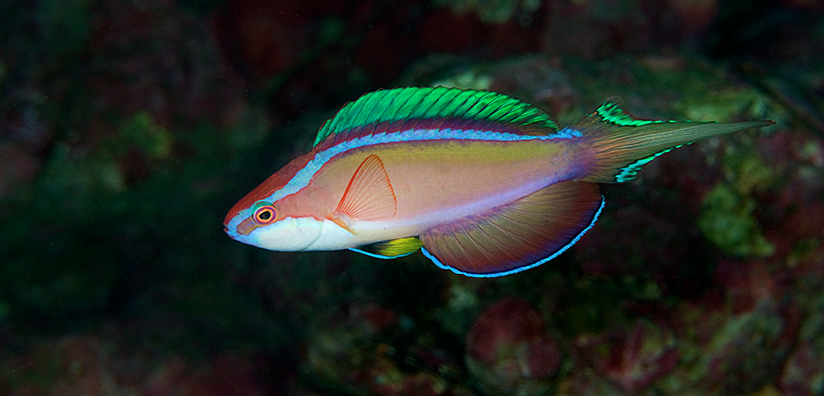Cirrhilabrus lanceolatus is a japanese endemic fairy wrasse that is so beautiful and so rare, its almost cruel and karmic how unobtainable it is. Most reefers are familiar with the rose-banded fairy wrasse (Cirrhilabrus roseafascia) which closely resembles the lanceolatus fairy wrasse, but one look at the latter and you’d realize that the rose-banded fairy wrasse, beautiful as it may be, can never hold a candle anywhere near this emerald-tinted beauty.


We’ve all seen pictures and videos of this iconic fish but seeing it in nuptial display is a whole other thing. A deepwater species, males are large and the strongly lanceolated tail can reach lengths of up a third of the total length. Normally, the fish is a delicate pink with beautiful emerald trimmings on the unpaired fins. Emerald green not only in color, but also in sheen.

When displaying, the typical posture of a displaying fairy wrasse is adopted. That is, enhanced coloration, display of metallic stripes/patches and flaring of fins. All Cirrhilabrus display metallic patches or stripes when displaying and in the case of the lanceolatus fairy wrasse, two bluish stripes develop from the mouth region and run along the dorsal and ventral area.
This nuptial stripe pattern is also observed in many species including C. jordani, and C. roseafascia. Not all species of fairy wrasses develop these nuptial stripes. Some like C. rubrimarginatus above display with patches of metallic hues on the body and fins. In the case of the latter, the patches are white.





